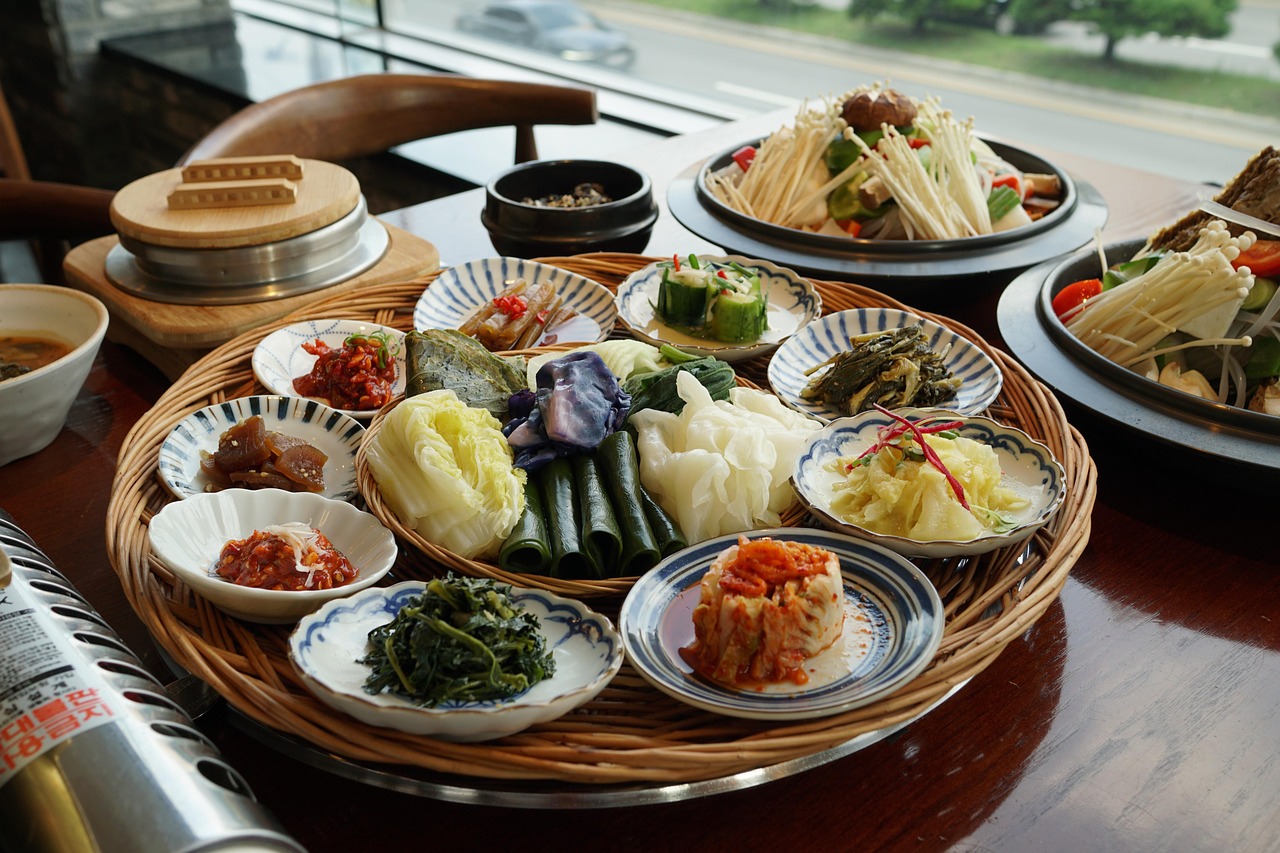Kimchi Chronicles: Unleashing Korea's Fiery Fermented Favorite
Prepare your taste buds for a tangy adventure as we delve into the world of kimchi, Korea's beloved fermented dish. From its humble beginnings to global culinary stardom, kimchi has captured hearts and palates worldwide. Join us as we explore the art of crafting this spicy, probiotic-packed powerhouse and discover innovative ways to incorporate it into your everyday meals.

The Art of Kimchi-Making: A Time-Honored Tradition
At its core, kimchi-making is a labor of love that has been passed down through generations in Korean families. The process begins with selecting fresh, crisp napa cabbage, which is then salted to draw out excess moisture. This step is crucial in creating the perfect texture and allowing the flavors to penetrate the vegetables fully. Once the cabbage is prepared, it’s time to create the signature kimchi paste. This vibrant red mixture typically includes gochugaru (Korean red pepper flakes), garlic, ginger, and fish sauce, among other ingredients. The art lies in balancing these flavors to achieve the perfect blend of heat, tang, and umami. After the cabbage is thoroughly coated with the paste, it’s packed tightly into jars for fermentation. This process can take anywhere from a few days to several weeks, depending on the desired level of fermentation. The result is a complex, flavorful dish that continues to evolve over time, developing deeper, more nuanced tastes as it ages.
Beyond Cabbage: Exploring Kimchi Varieties
While napa cabbage kimchi (baechu kimchi) is the most well-known variety, the world of kimchi is vast and diverse. In fact, there are hundreds of different types of kimchi, each with its own unique flavor profile and preparation method. Radish kimchi (kkakdugi) offers a crunchy texture and refreshing taste, perfect for pairing with rich, hearty dishes. Green onion kimchi (pa kimchi) provides a pungent kick that elevates soups and stews. For those seeking a milder option, cucumber kimchi (oi sobagi) offers a cool, crisp alternative that’s particularly refreshing during hot summer months. Seasonal variations also play a role in kimchi-making, with different vegetables taking center stage throughout the year. Winter kimchi tends to be more pungent and heavily spiced to last through the colder months, while summer kimchi is often lighter and more refreshing. Exploring these diverse kimchi varieties not only broadens your culinary horizons but also provides a deeper appreciation for the ingenuity and resourcefulness of Korean cuisine.
Kimchi in the Kitchen: Creative Culinary Applications
The versatility of kimchi extends far beyond its traditional role as a side dish. Innovative chefs and home cooks have found myriad ways to incorporate this fermented favorite into both Korean and fusion cuisines. Kimchi fried rice is a popular comfort food that transforms leftover rice into a flavorful, spicy dish. For a twist on classic comfort food, try adding kimchi to your grilled cheese sandwich for a tangy, spicy kick. Kimchi can also be used as a condiment, adding depth and complexity to burgers, tacos, and even pizza. In soups and stews, kimchi lends its rich, fermented flavors, creating dishes like kimchi jjigae (kimchi stew) that are perfect for cold winter days. For a unique appetizer, consider kimchi pancakes (kimchijeon), which combine the tanginess of kimchi with the crispy texture of a savory pancake. Even in the world of cocktails, kimchi is making its mark, with innovative bartenders using kimchi brine to add a savory element to bloody marys and martinis.
The Health Benefits: Kimchi as a Superfood
Beyond its culinary versatility, kimchi has gained recognition for its impressive health benefits. As a fermented food, kimchi is rich in probiotics, beneficial bacteria that support gut health and boost the immune system. The fermentation process also enhances the bioavailability of nutrients, making it easier for our bodies to absorb the vitamins and minerals present in the vegetables. Kimchi is particularly high in vitamin C, beta-carotene, and other antioxidants that help fight inflammation and support overall health. The garlic and ginger often used in kimchi have antimicrobial properties, potentially helping to ward off harmful bacteria. Some studies have even suggested that regular consumption of kimchi may aid in weight management and improve cholesterol levels. However, it’s worth noting that kimchi can be high in sodium, so those watching their salt intake should consume it in moderation. As with any food, the key is balance and moderation, but incorporating kimchi into your diet can be a flavorful way to support your health goals.
Kimchi Culture: Tips and Facts
-
Kimjang, the traditional kimchi-making process, is recognized by UNESCO as an Intangible Cultural Heritage of Humanity.
-
The average Korean consumes about 40 pounds of kimchi per year.
-
Kimchi can be aged for months or even years, developing deeper flavors over time.
-
Space kimchi was developed for Korea’s first astronaut to enjoy in orbit.
-
The red color in kimchi comes from gochugaru, Korean red pepper flakes.
-
Kimchi is often served at every meal in Korea, including breakfast.
-
There’s a kimchi museum in Seoul dedicated to the history and varieties of this iconic dish.
-
The fermentation process can be sped up or slowed down by adjusting the temperature.
-
Vegan kimchi varieties are becoming increasingly popular, using alternatives to fish sauce.
-
Kimchi-making parties, called gimjang, are a popular social activity in Korea.
As we conclude our journey through the world of kimchi, it’s clear that this fermented favorite is more than just a side dish – it’s a cultural icon, a nutritional powerhouse, and a culinary chameleon. Whether you’re a kimchi novice or a seasoned enthusiast, there’s always something new to discover in the vibrant, tangy world of this Korean staple. So why not embark on your own kimchi adventure? Experiment with different varieties, try incorporating it into your favorite recipes, or even attempt to make your own. The possibilities are as endless as the flavors of kimchi itself. Embrace the tang, savor the spice, and let kimchi add a zesty kick to your culinary repertoire.





